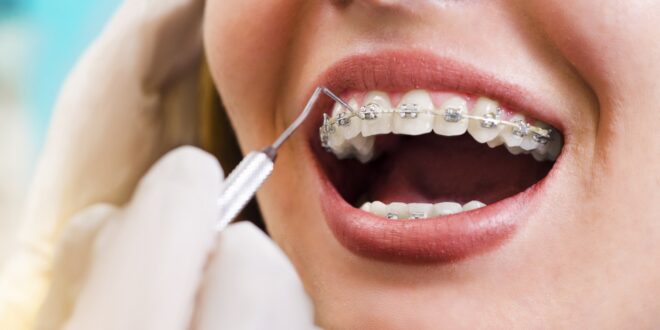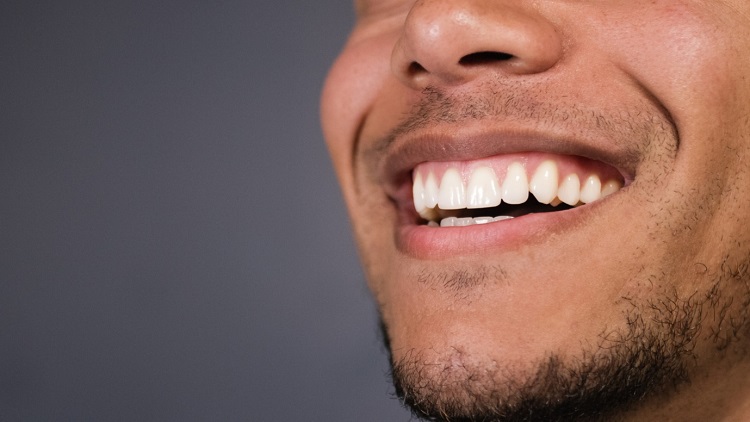Even though some of the world’s most popular stars have braces, they still sometimes get a bad rap. However, if you’re someone that wants to have a better and brighter smile, it’s the main way to make that happen!
Are you trying to learn about what dental treatments are available to you? Perhaps you just want to know more about the best dental braces for your loved ones and what those options would look like.
Luckily, there are a few very specific dental braces out there that are still used on a daily basis. One or more of them may be just the right fit.
Keep reading to learn more about the types of dental braces you could get today.
Metal Braces
These are the most traditional type of braces out there, so when you think of braces in your head, you’re probably imagining someone that has metal braces. Compared to how they were in the past, today’s metal braces are much smaller, more comfortable, and more effective at straightening teeth.
The metal braces are attached to the patient’s teeth and then connected with a wire. That wire is tied with elastic ties to the metal braces to keep them in the correct spot. To make sure that the teeth are moving, the orthodontist will adjust the wire and ties either on a monthly or bi-monthly basis.
A great thing about metal braces is that they have been tested by time for effectiveness. They also don’t require any reminders since they are permanently in your mouth until the orthodontist removes them at the end of treatment.
Lingual Braces
Lingual braces are considered a highly-specialized type of braces, so they aren’t commonly used by dentists or orthodontists. They require a very specific type of skill for an orthodontist to attach them correctly since they aren’t as easy to place in the right spots. As a result, not all offices actually are able to offer these types of braces as an option, so you may have to shop around to find a provider.
The best thing about these braces is that they are attached behind the teeth, which offers complete invisibility. You get the benefits of having braces without the potential embarrassment of having a “brace face” smile. Although braces are extremely common, we cannot deny that there is still a stigma around having them, and lingual braces help to hide the treatment as it’s working.
While lingual braces have a lot of benefits, they also can cause a slight lisp or speech change as the tongue gets used to the new attachment.
Self-Ligating Braces
These braces also rely on wiring, like the metal braces, to move the teeth. They can be made of metal or clear material.
The main difference is that instead of relying on elastic ties, the self-ligating braces have little clips that will hold the wire in place to make the process a little bit easier. This makes the braces themselves easier to adjust during appointment times as well, leading to shorter appointments overall (which is great for the doctor and the patient).
Self-ligating braces are a really good choice for patients that are sensitive to pain or have developmental delays.
Ceramic Braces
If you’re looking for braces that are a little more discrete but aren’t as uncommon as lingual braces, ceramic braces may be a good option. Instead of being made with metal, they are made with a tooth-colored or clear material. Adults and adolescents tend to prefer ceramic braces if they know they need straighter teeth but don’t want to use aligners (which we will discuss below).
The only downside with ceramic braces is that they are a little bit larger than metal braces and the material can get stained. If you have good brushing habits and a good diet, however, this should only be a minor concern.
Clear Aligners
While these are not technically a type of braces, we would be remiss if we didn’t take the opportunity to talk about them since they are so popular today. As Invisalign gained more popularity throughout the last couple of decades, more and more clear aligner brands started to come up as alternatives to traditional braces.
Now, you can find certain clear aligners that might work faster than traditional braces and require fewer appointments.
The main benefits of clear aligners are that they:
- Are removable
- Make it easy to brush and floss
- Are clear and practically invisible
- Aren’t uncomfortable
If you had braces and have found that your teeth have started to move again, aligners can help you correct those small changes without having to get braces again as a teen or adult. You can learn more about how it works to see if it might help you.
However, if you have a more severe orthodontic issue, other dental treatments or dental procedures are likely going to be more appropriate.
Find the Types of Dental Braces That Work for You
When considering the types of dental braces, remember that there is no right option for each person. Your doctor is going to be the best person to talk to about what braces or aligners will work best for you.
In some situations, a combination of different treatments is the best way to go to get the smile you’ve always dreamed of.
Did you find this article helpful? If so, take the time to look at the rest of our health-related blogs next.
 HammBurg Be informed with latest news, reviews, entertainment, lifestyle tips, and much more.
HammBurg Be informed with latest news, reviews, entertainment, lifestyle tips, and much more.



